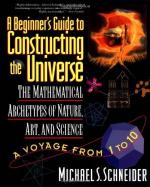|
This section contains 359 words (approx. 1 page at 400 words per page) |

|
Monad
The ancient mathematicians referred to the Monad as "The First, "The Seed" and "The Immutable Truth and Destiny - the number one."
Dyad
The Ancient Greeks referred to the number two as the Dyad. It was the number that brought polarity to the Monad.
Mandorla
The Mandorla was a religious symbol that unified God with man. The almond shape that is formed by the intersection of two circles is called the Mandorla which symbolizes unity and rebirth.
Vescia Piscis
The Vescia Piscis is a yoni (Sanskrit for female reproductive organs) and was believed to be the entity through which all shapes in the universe are created.
The Borromean Rings
The "three becomes one" concept can be studied through the sign known as the Borromean Rings. It was based on the family crest of the Borromeo family of Italy which illustrates that although the rings in the crest...
|
This section contains 359 words (approx. 1 page at 400 words per page) |

|




